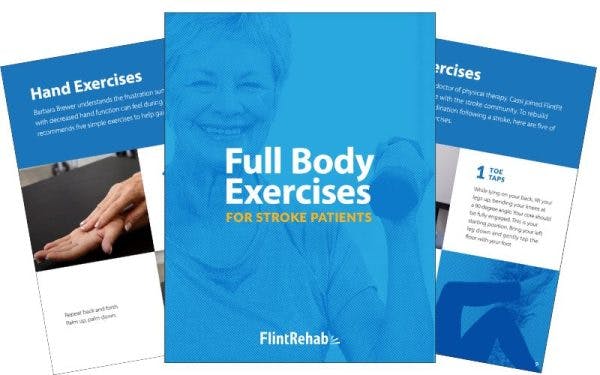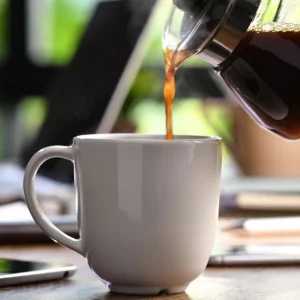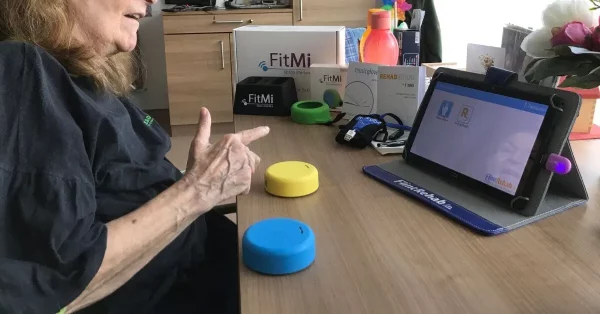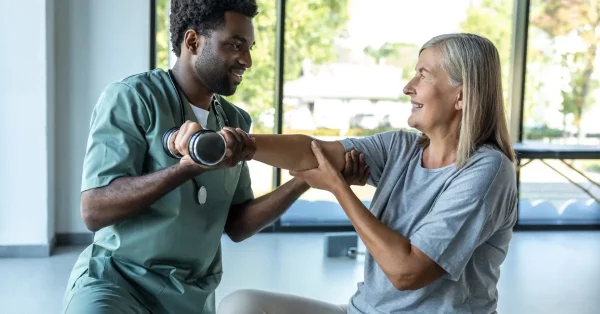Loss of sensation is a common secondary effect experienced by survivors of stroke. In fact, current research suggests that 50-80% of survivors experience some degree of sensory deficits after stroke. This can present as difficulty distinguishing sensations of pressure or temperature, numbness, or a total loss of sensation in a limb.
Fortunately, there is hope for regaining sensation after stroke through sensory reeducation. In this article we will discuss causes of sensory deficits after stroke as well as exercises to promote the return of sensation.
Use the links below to jump straight to any section:
- What Causes Sensory Issues After Stroke?
- How Sensory Reeducation Works
- Sensory Reeducation Exercises to Try at Home
- Additional Considerations for Decreased Sensation
What Causes Sensory Issues After Stroke?
Sensory issues after stroke can take many different forms. Some patients experience numbness on the affected side while others may feel a tingling or pins-and-needles sensation. In some cases, stroke survivors have trouble distinguishing between sensations of hot and cold or light vs. deep pressure.
Sensory issues like these often occur after a stroke has damaged a part of the brain that helps regulate sensation. The brain works as a whole to interpret sensation, but some areas play a more specific role. This means sensory deficits will vary depending on the location and severity of the stroke.
For example, the thalamus is responsible for relaying 98% of sensory input. Therefore, thalamic stroke survivors often experience numbness and other sensory issues. Additionally, patients who experience parietal lobe stroke experience sensory issues as this region of the brain helps process and regulate sensations such as pain and touch.
How Sensory Reeducation Works
Every stroke is different, therefore everyone’s prognosis and recovery from sensory issues will also be different. Some patients experience spontaneous recovery where sensation returns on its own. Other patients require continued therapy in order to maximize the chances of regaining sensation after stroke.
Through sensory reeducation, survivors can retrain the brain to process sensory signals again, promoting the return of sensation after stroke. This occurs through intentional rehabilitation that includes consistent practice of sensory retraining exercises. These exercises encourage neuroplasticity (the brain’s ability to heal and create new neural pathways) by providing stimulation to the brain to help promote sensory processing.
The brain responds to stimulation by rewiring itself based on the volume and frequency of your therapy. This means consistency and repetition are key for promoting the return of sensation after stroke. More exercise equals more stimulation and, as a result, faster recovery.
Sensory Reeducation Exercises to Try at Home
Sensory reeducation exercises can help restore your brain’s ability to interpret your senses. It is important to work closely with your occupational and/or physical therapist to create a rehab plan that will optimize your recovery. This will likely include sensory reeducation exercises like the ones listed below.
The following exercises specifically involve your sense of touch. Each time you touch something, you send sensory stimulation to your brain and encourage your brain to create new neural connections. These exercises reinforce reeducation of various sensations such as light touch, pressure, texture recognition, and temperature differentiation. In turn, this practice helps promote the return of sensation after stroke.
Repeat each exercise at least 10 times and practice for about 10-15 minutes a day. Remember, repetition and consistency are most important for a speedy recovery from stroke.
1. Tabletop Touch Therapy
Gather a variety objects with different textures and place them onto a table in front of you. Some examples of objects to practice with are soft scarves, rough sandpaper, fluffy cotton balls, rough Velcro, and cool silverware.
Without looking at the objects, pick them up and feel them. Try to distinguish the difference between textures, taking your time and being intentional when you think about or visualize each object.
2. Texture Hunting
Fill a bowl with uncooked rice and bury different textured objects in it, like marbles, coins, Velcro strips, and cotton balls. Then reach your hand into the bowl and try to find the objects without looking. Once you find an object, try to identify what object you are holding.
If you can’t do this at first, keep trying. Repeated exposure to sensory retraining exercises helps keep the brain stimulated to promote recovery of sensation after stroke.
3. Texture Recognition
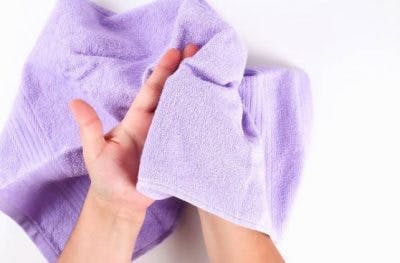
Have someone place different objects in your hand with your eyes open. Sense how these objects feel and practice naming these textures, such as rough, smooth, bumpy, etc. Once you’ve gone through all the objects and observed how they feel, perform the exercise again with your eyes closed.
Put your focus into feeling each object to imprint the connection in your mind. Note any difference between how the objects feel with your eyes open, then closed.
4. Temperature Differentiation
This sensory reeducation exercise is particularly beneficial for stroke survivors who have trouble feeling or distinguishing between heat or cold. Temperature differentiation involves using hot and cold materials to help rewire the neural pathways for temperature distinction.
To begin, soak a cloth in cold water and soak another cloth in warm (but not hot) water. Then, have someone place the cold cloth on your arm. Notice the sensation and think about how it is different than before the stroke.
After 30 seconds, have them switch the cold cloth with the warm cloth. Try to sense the difference in temperature.
Now, close your eyes. Have someone place one cloth on your arm and try to determine if you’re feeling heat or cold.
Repeat this exercise, alternating between the hot and cold cloths. If you don’t have someone to help you, then you can perform this exercise by using your unaffected hand to place the cloths on your arm. Be mindful of the temperature of the warm cloth as reduced sensation increases risk of burns.
5. Touch Localization
Close your eyes and have someone place their hand somewhere on your arm. Then, point to the area that you think they touched.
If you don’t point to the correct area, have them move your hand to that location. Then, open your eyes to visually absorb the information. Feedback like this helps retrain your brain to localize or pinpoint touch sensations. It’s like telling your brain, “I was not touched here, I was touched there.”
Repeat this exercise at least 10 times, preferably more! Once you master this sensory reeducation exercise, switch it up by having your assistant touch you with different textured objects, like a Q-tip or metal spoon.
Always keep your eyes closed during the exercise and, if you perform the exercise incorrectly, open your eyes once someone moves your finger to help your brain absorb the feedback.
Additional Considerations for Decreased Sensation
As you can imagine, reduced sensation after stroke can pose a threat to health and safety. In addition to participating in sensory reeducation, it is important to be mindful of the risks that accompany decreased sensation and to be proactive to reduce these risks.
The inability to distinguish between hot and cold sensations can prove dangerous when performing daily tasks such as cooking and self-care. Be aware of water temperature when bathing or washing dishes and monitor the temperature of electric cooktops to avoid burns.
Additionally, it is important to change body positions frequently and avoid being stationary in any one position for too long. Decreased sensation can prevent you from recognizing early warning signs of pressure ulcers, so it is important to perform regular skin checks.
Improving Sensation through Sensory Reeducation After Stroke
Following a stroke, many individuals experience sensation deficits including difficulty recognizing touch or pain and distinguishing between hot and cold sensations. Thankfully, sensory reeducation can provide the brain with the stimulation it needs to recover sensation after stroke.
This treatment technique emphasizes an important concept of stroke recovery, neuroplasticity. With consistency and repetition, there is increased potential for healing, including the return of sensation and feeling in the affected side.

